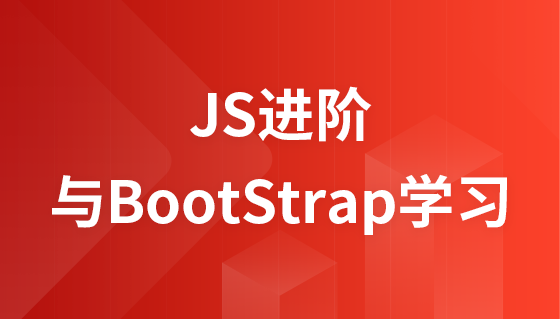
在go语言中处理json数据时,我们通常会使用encoding/json包将go结构体编码(marshal)成[]byte类型的json数据。然而,将这个[]byte数据输出到各种io.writer(例如http响应的http.responsewriter、文件或网络连接)时,初学者可能会遇到一些困惑。本文将详细介绍几种将json []byte数据输出到io.writer的有效方法,并分析其适用场景及优缺点。
假设我们有一个Message结构体,并已将其编码为json_msg []byte:
package main
import (
"encoding/json"
"fmt"
"io"
"log"
"net/http" // 假设 c.ResponseWriter 是 http.ResponseWriter
)
// Message 定义了要编码的结构体
type Message struct {
Id int `json:"id"`
Name string `json:"name"`
}
// 模拟一个 HTTP 处理器函数
func handler(w http.ResponseWriter, r *http.Request) {
m := Message{Id: 1, Name: "Go Programming"}
json_msg, err := json.Marshal(m)
if err != nil {
log.Printf("Error marshaling JSON: %v", err)
http.Error(w, "Internal Server Error", http.StatusInternalServerError)
return
}
// 接下来我们将展示如何将 json_msg 输出到 w (http.ResponseWriter)
// ...
}
func main() {
http.HandleFunc("/", handler)
log.Fatal(http.ListenAndServe(":8080", nil))
}fmt.Fprintf 函数的签名为 func(w io.Writer, format string, a ...interface{}) (n int, err error)。它要求第二个参数是一个格式字符串。当我们尝试直接将 []byte 类型的 json_msg 作为非格式化参数传递时,Go编译器会报错,因为它期望的是一个字符串类型或可以通过 %s 格式化为字符串的类型。
错误示例(初学者常见错误):
// 错误的用法,会导致编译错误 // fmt.Fprintf(c.ResponseWriter, json_msg)
正确用法: 为了使用 fmt.Fprintf 输出 []byte,我们需要明确告诉它将字节切片视为字符串。这可以通过使用 %s 格式化动词来实现。
// 方法一:使用 fmt.Fprintf 格式化输出
func outputWithFprintF(w io.Writer, json_msg []byte) {
_, err := fmt.Fprintf(w, "%s", json_msg)
if err != nil {
log.Printf("Error writing with Fprintf: %v", err)
// 通常在 HTTP 处理器中会返回一个错误响应
}
}注意事项:
立即学习“go语言免费学习笔记(深入)”;
io.Writer 接口定义了一个核心方法 Write([]byte) (n int, err error)。由于 json.Marshal 返回的正是 []byte 类型,我们可以直接调用 io.Writer 的 Write 方法将字节切片写入。这是将原始字节数据写入 io.Writer 最直接和惯用的方式。
// 方法二:直接使用 io.Writer.Write 方法
func outputWithWriterWrite(w io.Writer, json_msg []byte) {
_, err := w.Write(json_msg)
if err != nil {
log.Printf("Error writing with Writer.Write: %v", err)
}
}注意事项:
立即学习“go语言免费学习笔记(深入)”;
// 在 HTTP 处理器中的应用示例
func handlerWithWriterWrite(w http.ResponseWriter, r *http.Request) {
m := Message{Id: 2, Name: "Direct Write"}
json_msg, err := json.Marshal(m)
if err != nil {
log.Printf("Error marshaling JSON: %v", err)
http.Error(w, "Internal Server Error", http.StatusInternalServerError)
return
}
w.Header().Set("Content-Type", "application/json")
_, err = w.Write(json_msg)
if err != nil {
log.Printf("Error writing JSON to ResponseWriter: %v", err)
}
}json.Encoder 是 encoding/json 包提供的一个更高级、更高效的工具,用于将Go值编码为JSON并直接写入 io.Writer。它避免了首先将整个JSON数据编码到内存中的 []byte 切片,然后才写入 io.Writer 的中间步骤。这对于处理大型JSON对象或需要优化内存使用的场景尤为重要。
json.NewEncoder(w io.Writer) 函数创建一个新的 json.Encoder,它会将编码后的JSON数据写入到指定的 io.Writer。然后,你可以调用 encoder.Encode(v interface{}) 方法来编码Go值。
// 方法三:使用 json.Encoder 进行流式输出
func outputWithJsonEncoder(w io.Writer, data interface{}) {
encoder := json.NewEncoder(w)
// 可以设置一些编码选项,例如缩进
// encoder.SetIndent("", " ")
err := encoder.Encode(data)
if err != nil {
log.Printf("Error encoding with json.Encoder: %v", err)
}
}在HTTP处理器中的应用示例:
func handlerWithJsonEncoder(w http.ResponseWriter, r *http.Request) {
m := Message{Id: 3, Name: "JSON Encoder Stream"}
w.Header().Set("Content-Type", "application/json")
// 直接将结构体 m 编码并写入 w
err := json.NewEncoder(w).Encode(m)
if err != nil {
log.Printf("Error encoding JSON to ResponseWriter: %v", err)
http.Error(w, "Internal Server Error", http.StatusInternalServerError)
}
}优点:
在Go语言中将JSON数据输出到 io.Writer 时,我们有多种选择:
在实际开发中,应优先考虑使用 json.NewEncoder。只有当您确实需要在内存中操作完整的JSON []byte 数据(例如,在发送前进行修改、计算哈希等),或者已经从其他源获取到 []byte 形式的JSON时,才考虑使用 w.Write(json_msg)。无论选择哪种方法,始终要进行适当的错误处理,以确保程序的健壮性。
以上就是Go语言:将JSON数据高效输出到io.Writer的实践指南的详细内容,更多请关注php中文网其它相关文章!

每个人都需要一台速度更快、更稳定的 PC。随着时间的推移,垃圾文件、旧注册表数据和不必要的后台进程会占用资源并降低性能。幸运的是,许多工具可以让 Windows 保持平稳运行。




Copyright 2014-2025 https://www.php.cn/ All Rights Reserved | php.cn | 湘ICP备2023035733号